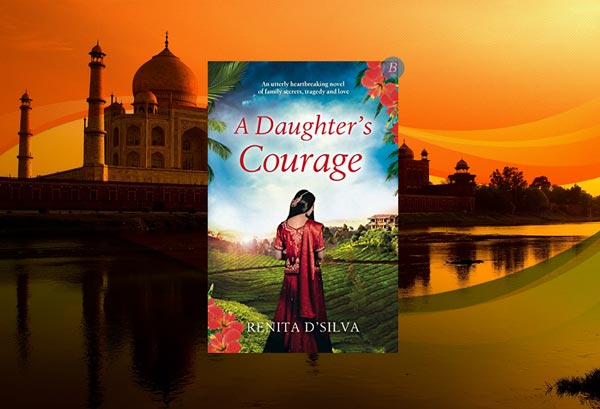Why a Booktrail?
1929, 2000s: The lure of India – can it heal a broken heart?

1929, 2000s: The lure of India – can it heal a broken heart?
1929. When a passionate love affair threatens to leave Lucy in disgrace, she chooses a respectable marriage over a life of shame. With her husband, coffee plantation owner James, she travels to her new home in India, leaving her troubled past behind her.
Present day. With her career in shatters and her heart broken by the man she thought was her future, Kayva flees from bustling Mumbai to her hometown. A crumbling temple has been discovered in a village nearby, and with it letters detailing its tragic history – desperate pleas from a young woman called Gowri.
As Kavya learns of Gowri and Lucy’s painful story, she begins to understand the terrible sacrifices that were made and the decision the two women took that changed their lives forever. Can the secrets of the past help Kavya to rebuild her life?

The village mentioned in the novel is fictional and is based on the author’s interpretation of several village from many different parts of India. The drought of 1928 is also fictional.
Everything in India is new to Lucy, from the jewel-coloured fabrics to the exotic spices. She comes to the country not really knowing what to expect. There is evocative intrigue from the very first sentence:
” In a scenic corner of India beside sparkling fields and across a jungle, near rain bejewelled coffee plants lined with areca trees ad pepper vines, a small temple nestles, slowly going to ruin.”
It’s on the plantation where she meets Gowri, a young woman who tends the temple on the plantation’s edge. She lives in isolation from her family and it’s a mystery why – but this is what Lucy is curious to find out
Devadasis have been caled by different names in varius parts of India but for the purpose of this novel, I have decided to stick to the term ‘ devadasi’. There’s a lot of controversy over them -some hold them in high regard in the 19th century and thought them good in the arts. Some had patrons who were good to them but Gowri sadly did not. The Devadasis started to loose their charm in the 20th century says the author.
Gowri is not the typical devadasis – she is from a family with good dancing pedigree and is well educated in the arts. However she is typical in the sense that she is a woman in India with no say in her own destiny
Susan @thebooktrailer
The locations might be fictional but boy are they exotic and evocative – There’s a line which says that the soundtrack to India is the chickens in the street and the rickshaws weaving in and out of the tourists -and having been in this novel, I quite agree.
A story of hope and redemption in many ways – the threads of several women’s stories woven together delicately like ribbons on a sari. I really enjoyed the cultural aspects of this story – the elephant rampage, the role and cultural identity of the Devadasis, the pride of the family’s ancestral home, the plantation…ah the plantation was the backdrop to the biggest mystery of them all and I felt the mood and story envelop me. The characters were well formed and the quotes from the Goddess added another layer of magic.
Author/Guide: Renita D’Silva Destination: India, Mumbai Departure Time: 1929, 2000s
Back to Results1910. 1970s :In the middle of a severe storm two sisters rescue a mysterious man from a shipwreck.
Read more